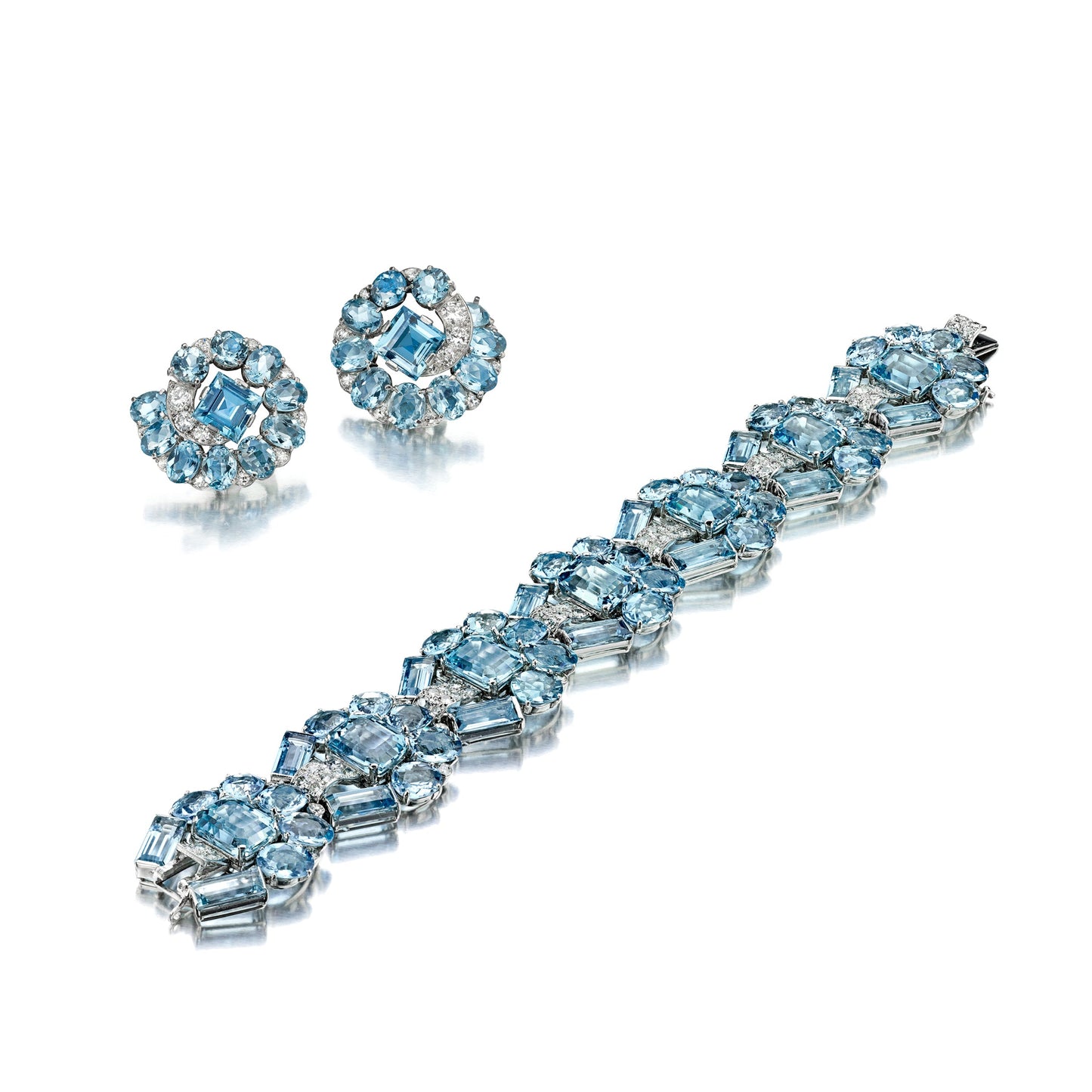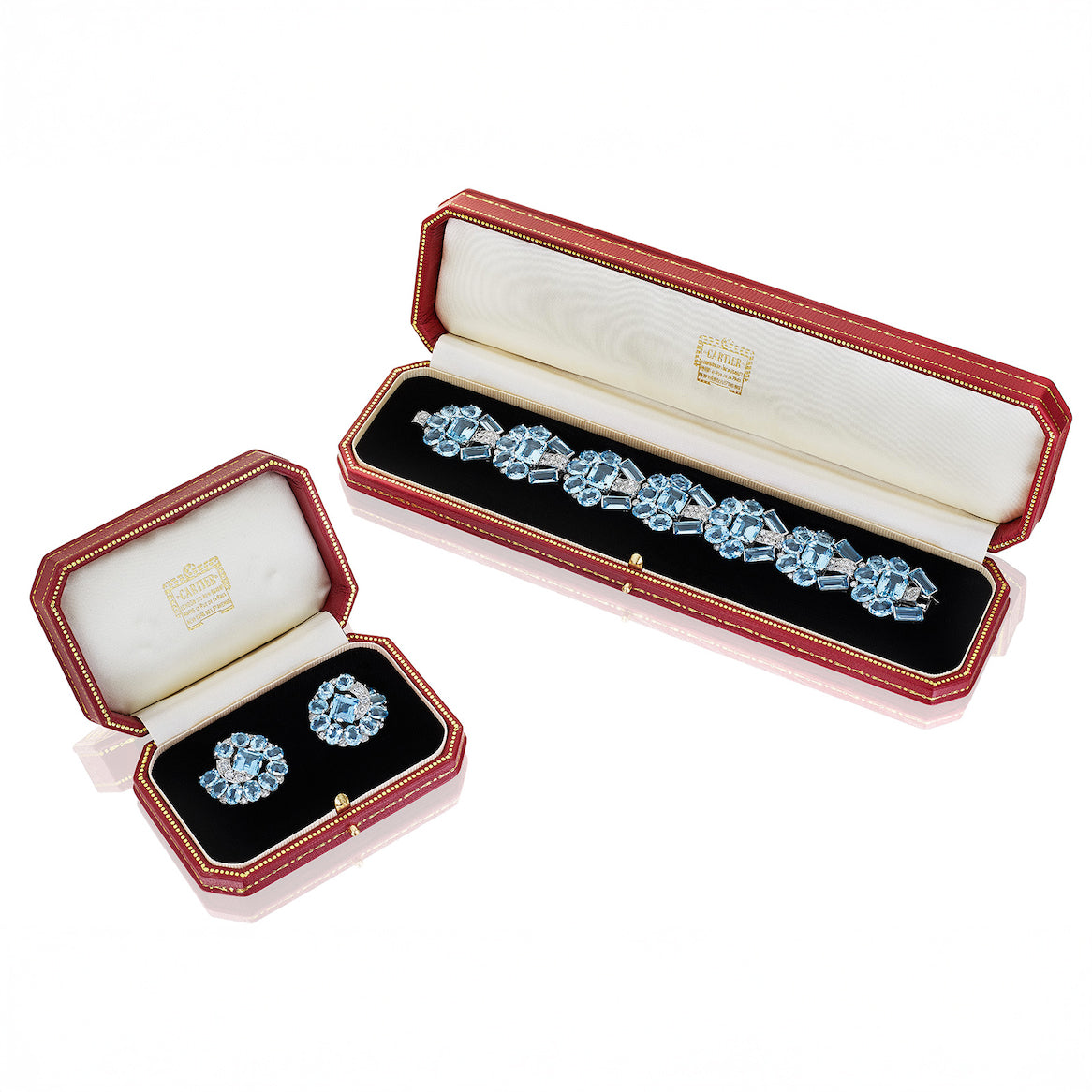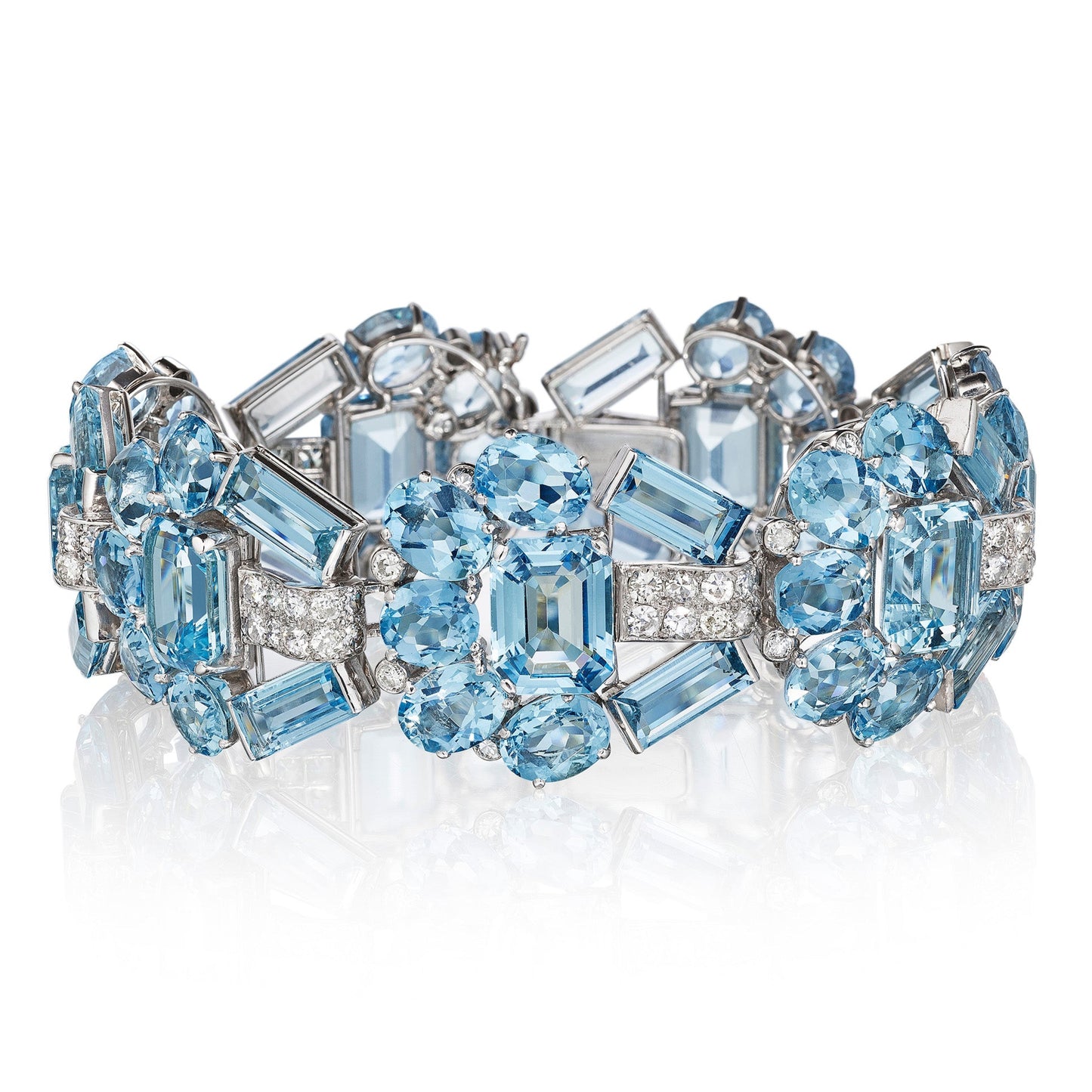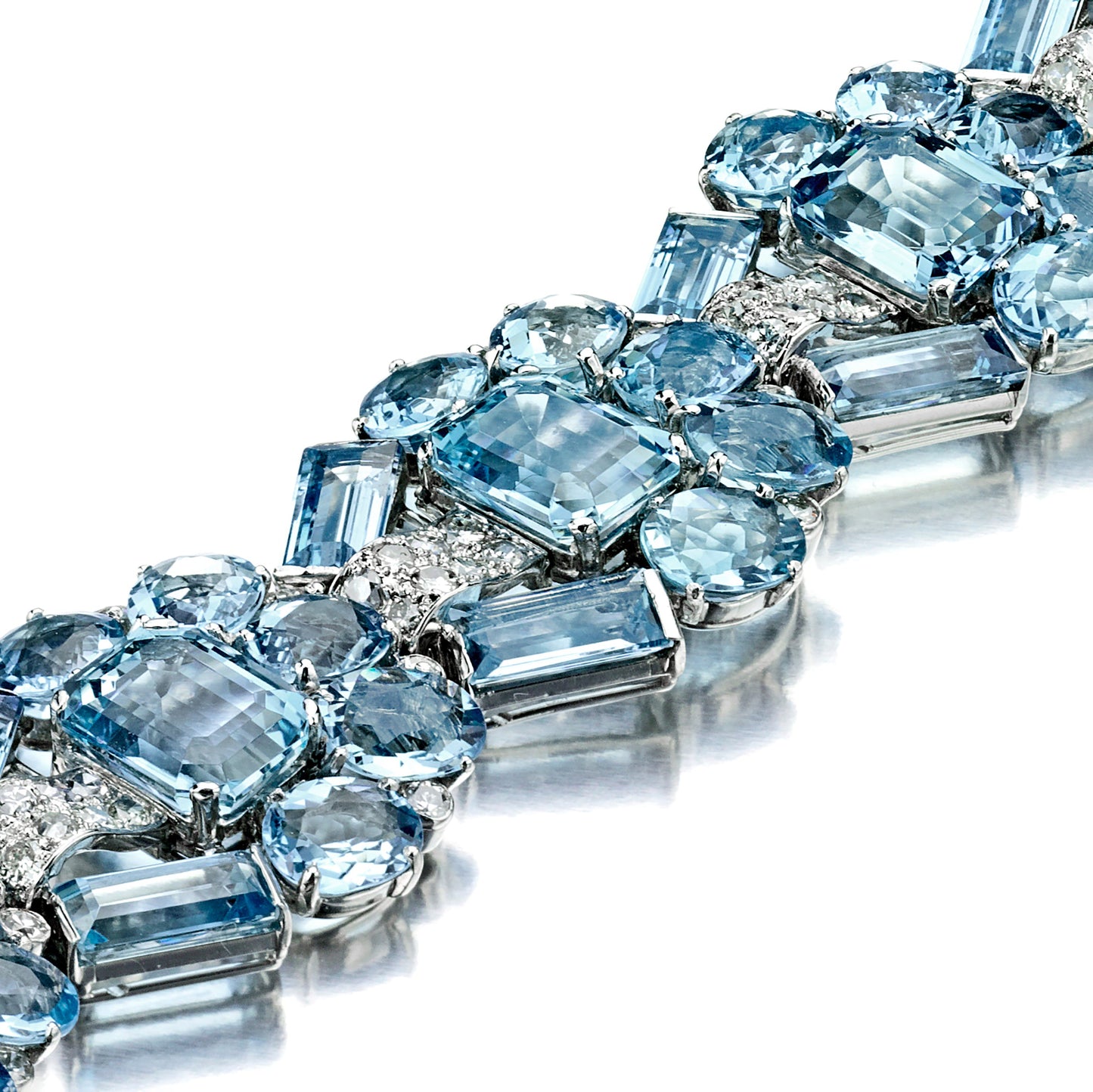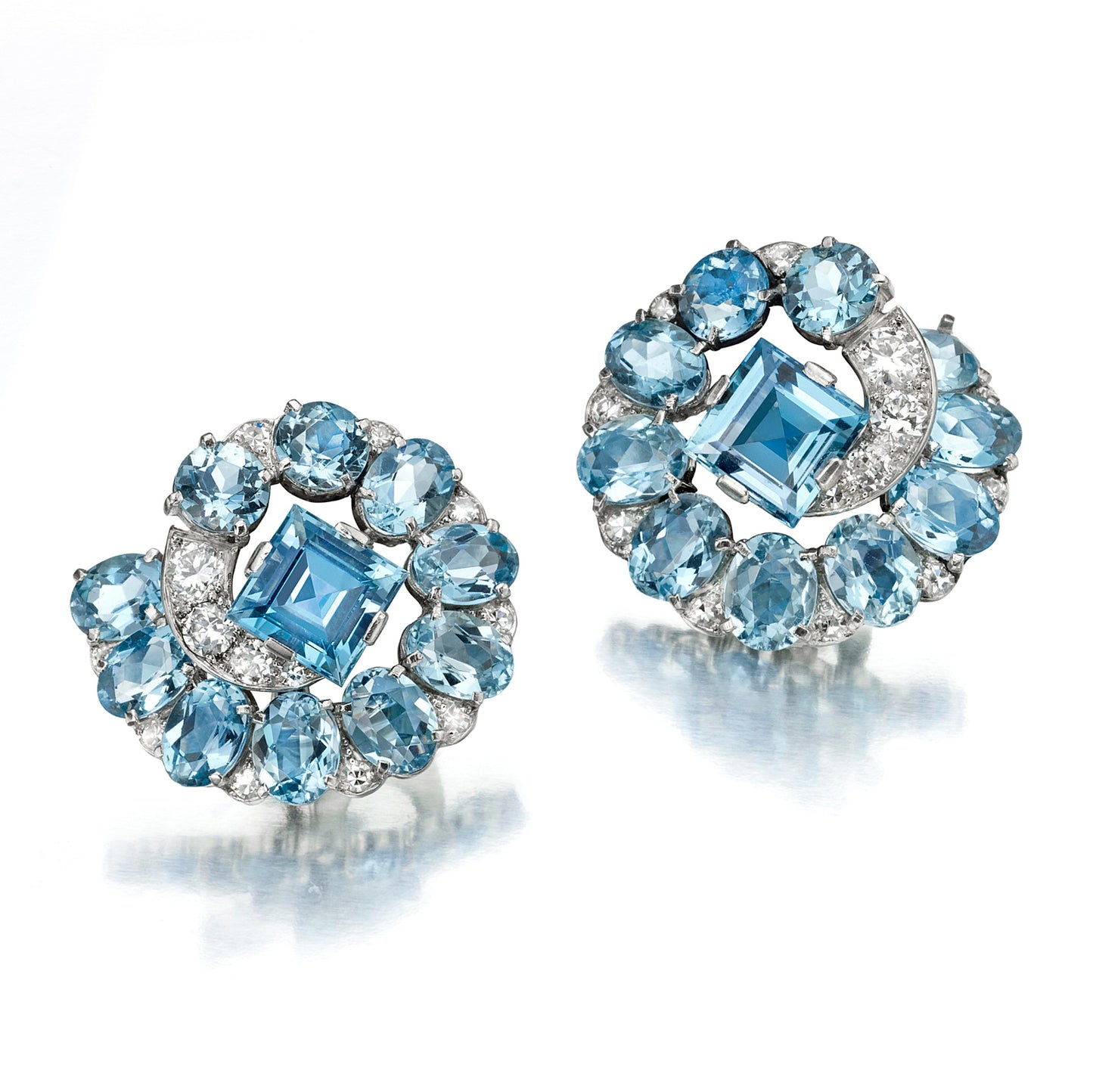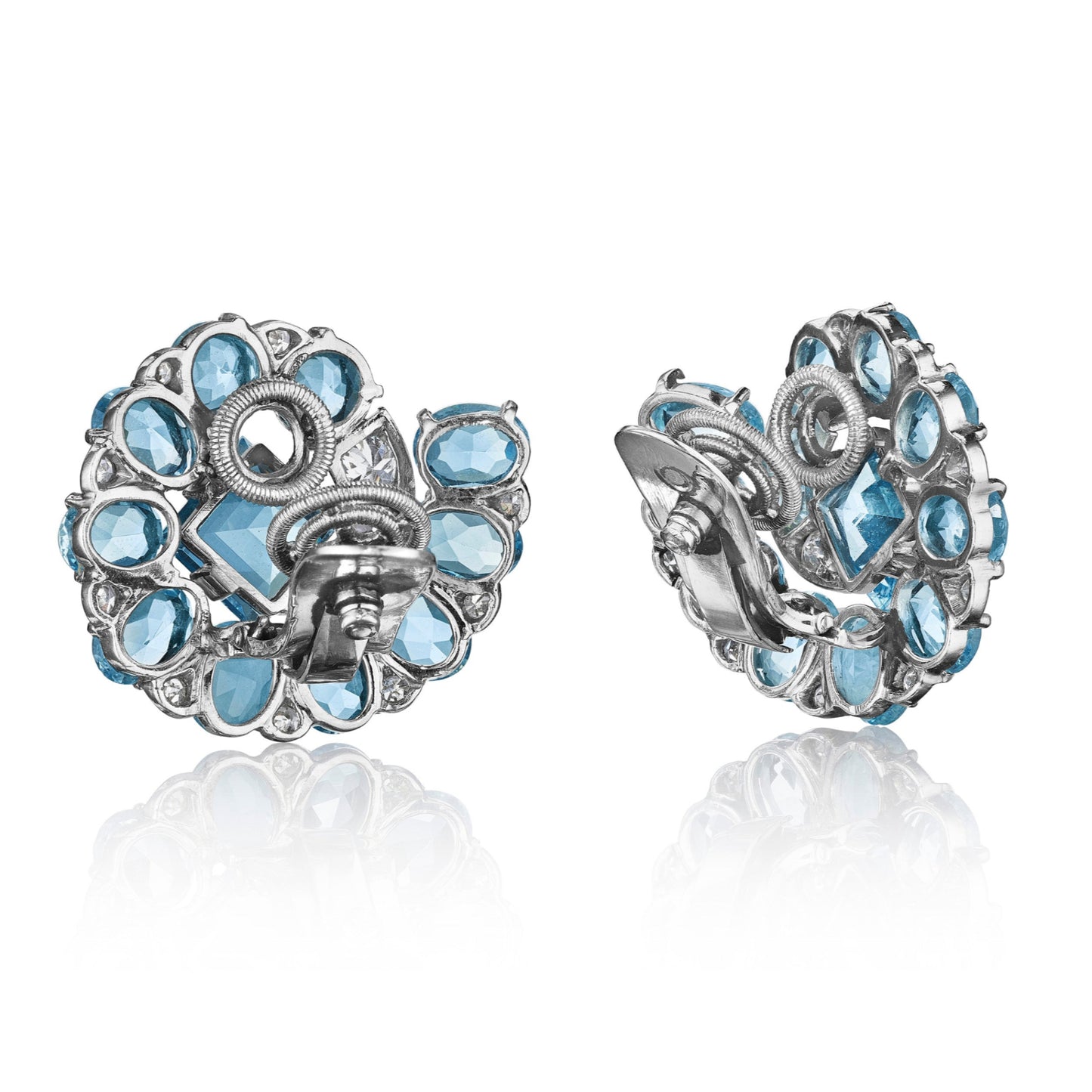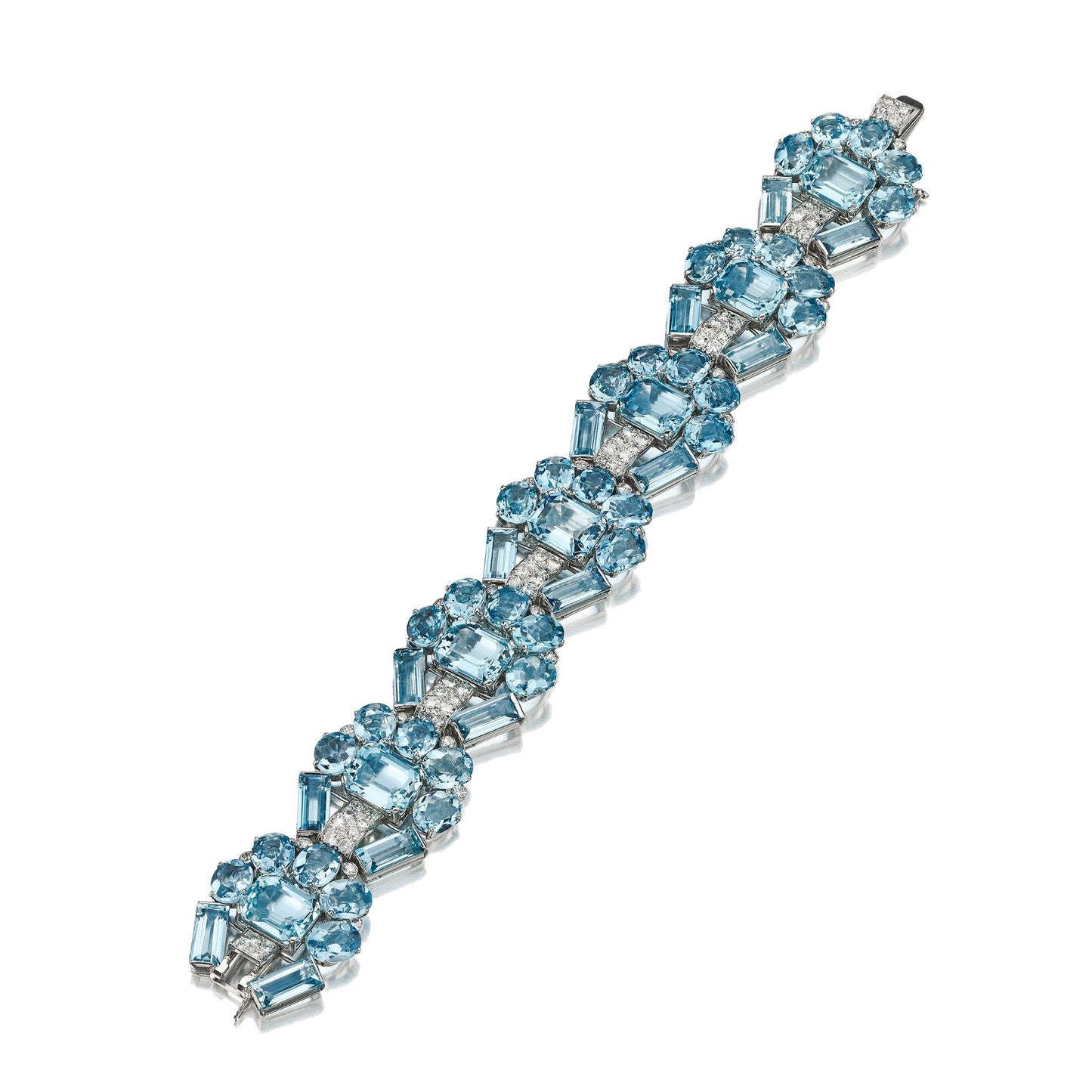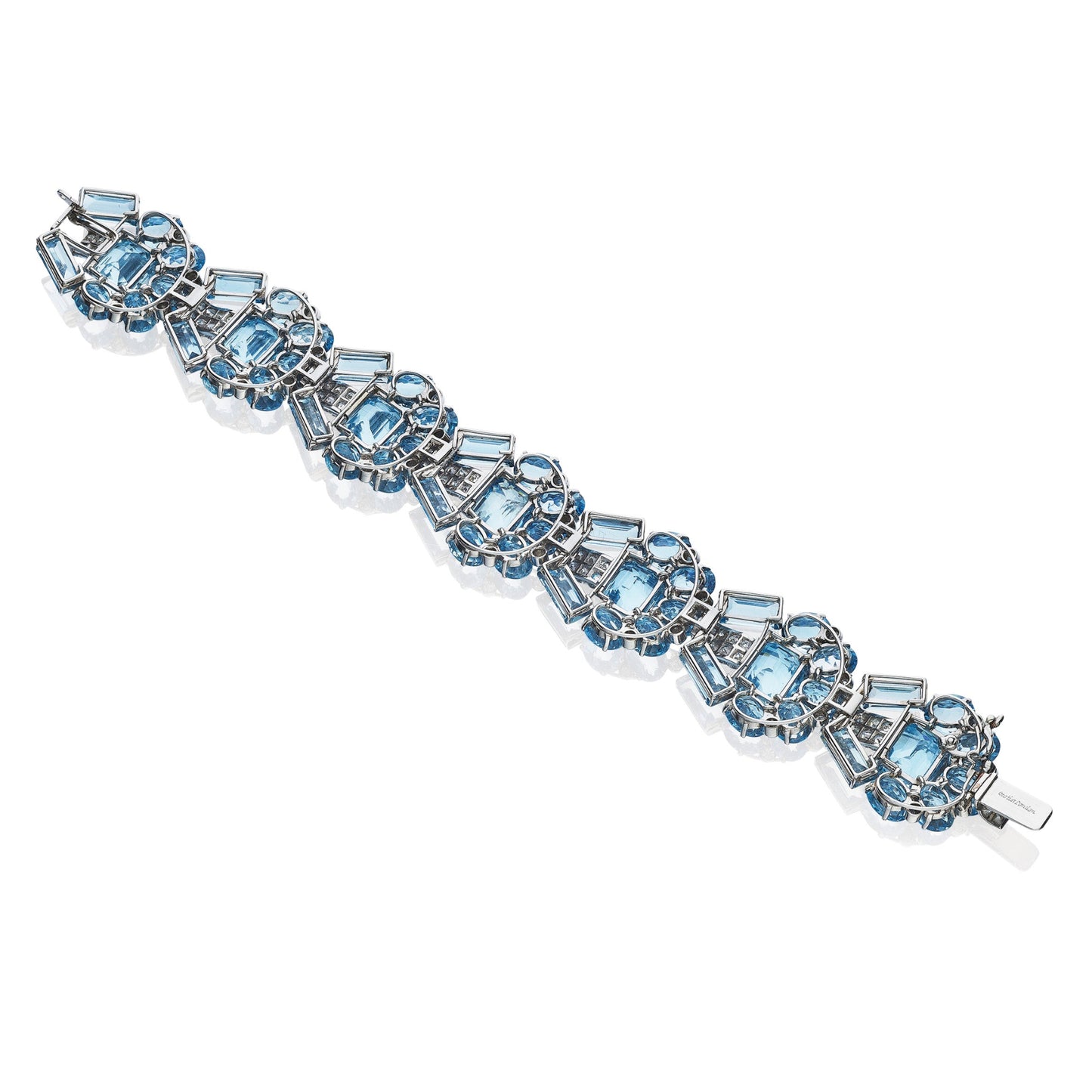Art Deco Aquamarine and Diamond Bracelet and Ear Clips by Cartier, London, circa 1935
Art Deco Aquamarine and Diamond Bracelet and Ear Clips by Cartier, London, circa 1935
A demi-parure of a bracelet and ear clips, the bracelet composed of a series of oval, rectangular, and baguette-cut aquamarine segments joined by pave-set diamond-set links, the ear clips each composed as a swirl of oval aquamarines spaced with round diamonds ending with a square aquamarine; mounted in platinum, in original Cartier red leather boxes
- Bracelet: 77 aquamarines, 96 diamonds
- Ear clips: 22 aquamarines, 26 diamonds
- Bracelet signed Cartier London 1613, ear clips signed Cartier London 7582
- Bracelet: 7 ¼ x 1 inches, ear clips each: 1 x 1 inch
Additional cataloguing
Biography
Cartier was founded in Paris in 1847 by Louis-François Cartier. His three grandsons, Louis, Pierre, and Jacques, built the house into a famous international jewelry empire serving royalty, Hollywood stars, and socialites. Cartier has created some of the most important jewelry and objects of art of the twentieth century with many iconic designs such as mystery clocks, Tutti Frutti jewelry and the Panthère line. In 1983, The Cartier Collection was established with the objective of acquiring important pieces that trace the firm's artistic evolution. Today, Cartier has 200 stores in 125 countries.
Significance
The luminous pale-blue stone aquamarine has long been used in jewelry design since its discovery in 1723. High quality aquamarine is difficult to find, and when assembled into a piece of jewelry each stone must be cut to a similar size so that the color is equally intense. While aquamarine was a popular colored stone in the 1930s, the difficulty in matching stones meant that high jewelry houses made few pieces and they rarely come on the market today. Cartier, a leader of the Art Deco aesthetic, incorporated this pale blue stone in several of their designs and made the majority of these jewels in their London office after 1932 for clients from Europe and the United States. They mention the difficulty of sourcing perfectly matched gemstones in letters from London to New York writing, “We have . . . a number of partly completed necklaces, which we were unable to finish owing to the lack of the necessary aquamarines.”
One of the most fascinating commissions came from Elsie de Wolfe, also known as Lady Mendl, a prominent New York social figure and successful decorator. She once posed for photographers who remarked, “Her hair was tinted aquamarine to match her latest acquisition, a curling spiral tiara of diamonds and aquamarines that she had commissioned from Cartier, her favorite jeweler.” In 1935 Lady Mendl, at the age of 70, was selected as the best-dressed woman in the world by Parisian designers and was known for how she wore her clothing and accessories. Created in the same era, this bracelet and clips features a striking and intricate pattern of aquamarines and diamonds. Cartier designers cleverly maneuvered around the need for similarly sized stones by utilizing a variety of cuts then juxtaposing the different geometric shapes for visual interest. Small diamonds scattered throughout sparkle when worn.
Responding to the new sleek fashions of the 1930s, Cartier’s aquamarine jewels were in high demand by clients globally and they provided the stone in various forms including clips, tiaras, necklace, and bracelets. In 1936 Vogue featured Cartier bracelets writing, “Aquamarines—limpid, glacial as the waters of a Northern lake—to play against a dress of white satin or the palest mauve mousseline.” This rare suite of a bracelet and ear clips is an unusual example of their skill with aquamarines in the Art Deco era and would be just as beautiful worn today as when it was first created.
